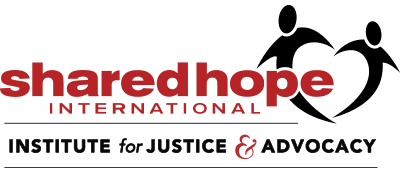Policy Issue 1
Criminal Provisions
Mirroring the federal law, state child sex trafficking statute(s) should unequivocally apply to the conduct of buyers by criminalizing the act of “purchasing” or “patronizing” a minor for sex, regardless of the child’s age. States with existing ambiguous language (i.e. “obtains,” “causes,” or “procures”) should mitigate the risk of prosecutorial or judicial misinterpretation and add clear buyer conduct to the child sex trafficking statute(s).
Issue Brief 1.1 State Survey Chart 1.1In addition to using the child sex trafficking law to prosecute buyers, law enforcement and prosecutors should also be able to investigate and charge a wide range of buyer conduct under state CSEC laws. These laws must clearly apply to buyers by criminalizing the act or attempt to solicit, purchase, or patronize a minor for sex without requiring an additional and limiting actus reus (e.g., use of computer to solicit the minor, transporting the minor). Historically, CSEC laws did not provide protections for older minors; to ensure this inadequacy is addressed, states should not limit buyer-applicable CSEC laws to younger minors.
Issue Brief 1.2 State Survey Chart 1.2Child sex trafficking cases are complicated to investigate and prosecute, making it imperative for law enforcement and prosecutors to have a variety of offenses in addition to the trafficking offense that cover an array of exploitive conduct. State CSEC laws should protect all minors under 18 without requiring an additional and limiting actus reus (e.g., use of computer to solicit the minor, transporting the minor).
Issue Brief 1.3 State Survey Chart 1.3The harm caused by buyers and traffickers is not mitigated by the offender’s apparent ignorance regarding the child victim’s age, and the offender, not the child victim, should bear the risk of that mistake. As such, state law should clearly prohibit buyers and traffickers from asserting a mistake of age defense in prosecutions for child sex trafficking involving victims who are under 18 years of age.
Issue Brief 1.4 State Survey Chart 1.4Permitting law enforcement to pose as a minor for the purpose of investigating sex trafficking is essential to fighting the crime without risking actual harm to children. Child sex trafficking laws should expressly prohibit buyers and traffickers from raising a defense that the person solicited was not an actual minor.
Issue Brief 1.5 State Survey Chart 1.5Laws that clearly provide for business entity liability support law enforcement and prosecutors’ ability to investigate and prosecute offending entities that may not be directly involved in trafficking conduct but, instead, aid, assist, or enable the trafficking enterprise for purposes of financial gain.
Financial penalties may function as both a deterrent for offenders and a victim services funding stream, the latter providing a valuable resource for ensuring much needed services are adequately funded and available statewide. Accordingly, state asset forfeiture laws should direct a percentage of a sex trafficking or CSEC offender’s forfeited assets toward a victim services fund. Additionally, states should assess a mandatory fee against sex trafficking and CSEC offenders that is also directed toward a victim services fund.
Issue Brief 1.7 State Survey Chart 1.7